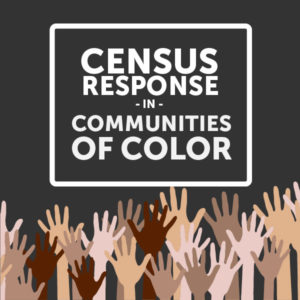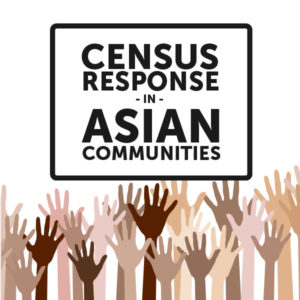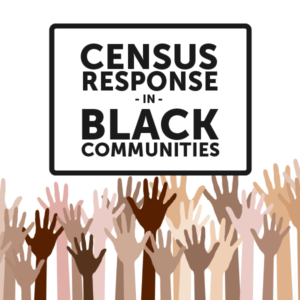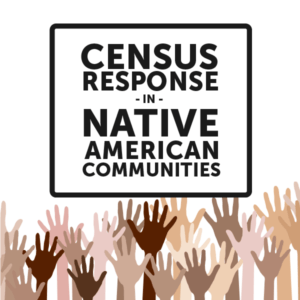
Census response rates in Hispanic and Latino communities
Hispanic and Latino communities are at a high risk of being undercounted in the 2020 Census, jeopardizing federal funding, social services, and government representation.
Identify areas with low response rates
Explore counties and census tracts by state
Undercounts of Hispanic and Latino communities have persisted in the census—especially for Hispanic children. In the 2020 Census, lingering fear over a citizenship question—which was proposed by the Trump administration but barred by the Supreme Court—may make some Latino families and immigrants distrust the census. It is estimated that in 2010 the U.S. Census Bureau undercounted Hispanic children by 7.5%, and the total Hispanic population by 1.5%. Compounding matters in 2020, Hispanic and Latino communities are experiencing disproportionate health and economic impacts from coronavirus.
Why the census matters
The decennial census is mandated by Article 1, Section 2 of the U.S. Constitution. The census aims to count the entire population of the United States and five U.S. territories.
The results of the census determine the distribution of an estimated $1.5 trillion in federal tax dollars to states and communities for health, education, housing, and infrastructure programs. Census results are used to help determine disaster response needs and plan for new hospitals, schools, and roads.
The census also determines political representation. The results determine each state’s share of congressional seats and Electoral College votes, and they are used to draw boundaries for state and local voting districts.
The census relies on households to self-respond by completing the census online, by mail, or by phone. The self-response rate is especially important in 2020 because of the pandemic. The census typically conducts in-person follow up with non-responding households, but these activities have been limited and delayed in 2020 due to the risk of COVID-19. Groups that have been historically hard to count are likely to have an even higher risk of being undercounted in 2020.
Hard-to-count groups
Many groups of people are at risk of being miscounted in the census because they are hard to count, including multi-family households, people experiencing homelessness, young children, immigrants, people of color, and those in dense urban areas or remote rural areas.
These populations may be difficult to physically find in order to complete the census form, they may mistrust the government, and they may experience technological or language barriers that make completing the census form more difficult. These groups were undercounted by more than 1.5 million in 2010, and today represent an even larger share of the population.
Complications from coronavirus
Coronavirus has made the 2020 census more complex, although the census faced significant challenges even before the pandemic. To try and get a more accurate count, the deadline for response was extended from July to October, but has now been cut short to September 30. Compounding the challenge, many hard-to-count groups are also those who experience disproportionate health and economic impacts from coronavirus—impacts that are likely to persist for many months.
In the past, in-person visits by census workers have helped improve participation among hard-to-count groups, but these visits have been delayed. When they resume, the COVID-19 pandemic may make people less comfortable interacting with census workers.
Community action
Many organizations are working hard to get full and accurate census counts in 2020.
Supported by the U.S. Census Bureau, Complete Count Committees (CCC) are volunteer committees established by tribal, state, and local governments and community leaders or organizations to increase awareness and motivate residents to respond to the 2020 Census. Find a nearby CCC here.
Philanthropists, specifically, can participate in the Funders’ Committee for Civic Participation’s Funders Census Initiative 2020.
Explore interactive maps showing census response rates in communities of color.
Data sources and methods
Decennial census self-response rates for the 2010 and 2020 decennial censuses are overall cumulative self-response rates from the U.S. Census Bureau. Response data for the 2020 census are updated daily. The self-response rate is the percent of households that completed the census on their own either online, by mail, or by phone. It is especially important in 2020 because in-person follow-up activities with non-responding households have been limited and delayed due to the coronavirus pandemic.
Demographic data are from the 2014-2018 American Community Survey (ACS) 5-yr averages published by the U.S Census Bureau.
Boundary data represented in the maps are proposed 2020 boundaries available from the U.S. Census Bureau. Mismatches between old (2018) and new (2020) geographies were dealt with using simple spatial intersects. In the case that a new geography (2020) represented two or more older geographies (2018) combined, the ACS 5-yr data for the older geography representing the largest number minorities was used. In the case that a new geography (2020) represented a split of an old geography (2018), the ACS 5-yr demographic data was assigned to all resulting new geographies.




